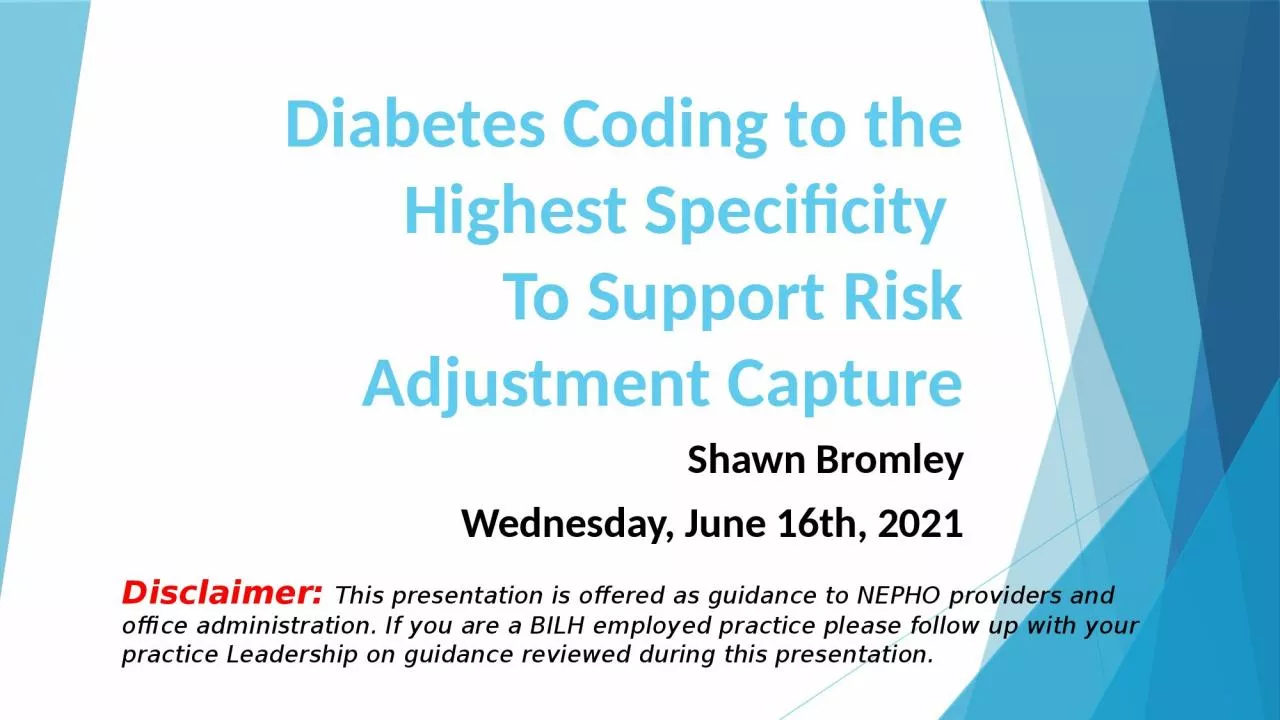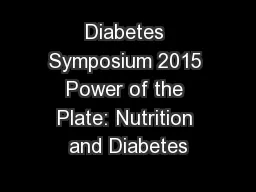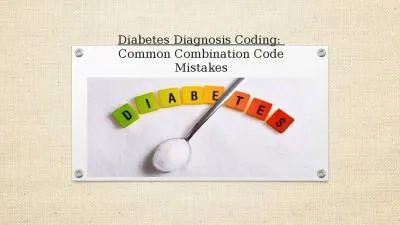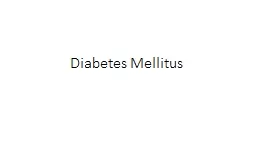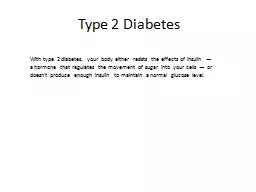PPT-Diabetes Coding to the Highest Specificity
Author : emery | Published Date : 2022-06-11
To Support Risk Adjustment Capture Shawn Bromley Wednesday June 16th 2021 Disclaimer This presentation is offered as guidance to NEPHO providers and office administration
Presentation Embed Code
Download Presentation
Download Presentation The PPT/PDF document "Diabetes Coding to the Highest Specifici..." is the property of its rightful owner. Permission is granted to download and print the materials on this website for personal, non-commercial use only, and to display it on your personal computer provided you do not modify the materials and that you retain all copyright notices contained in the materials. By downloading content from our website, you accept the terms of this agreement.
Diabetes Coding to the Highest Specificity: Transcript
Download Rules Of Document
"Diabetes Coding to the Highest Specificity"The content belongs to its owner. You may download and print it for personal use, without modification, and keep all copyright notices. By downloading, you agree to these terms.
Related Documents

